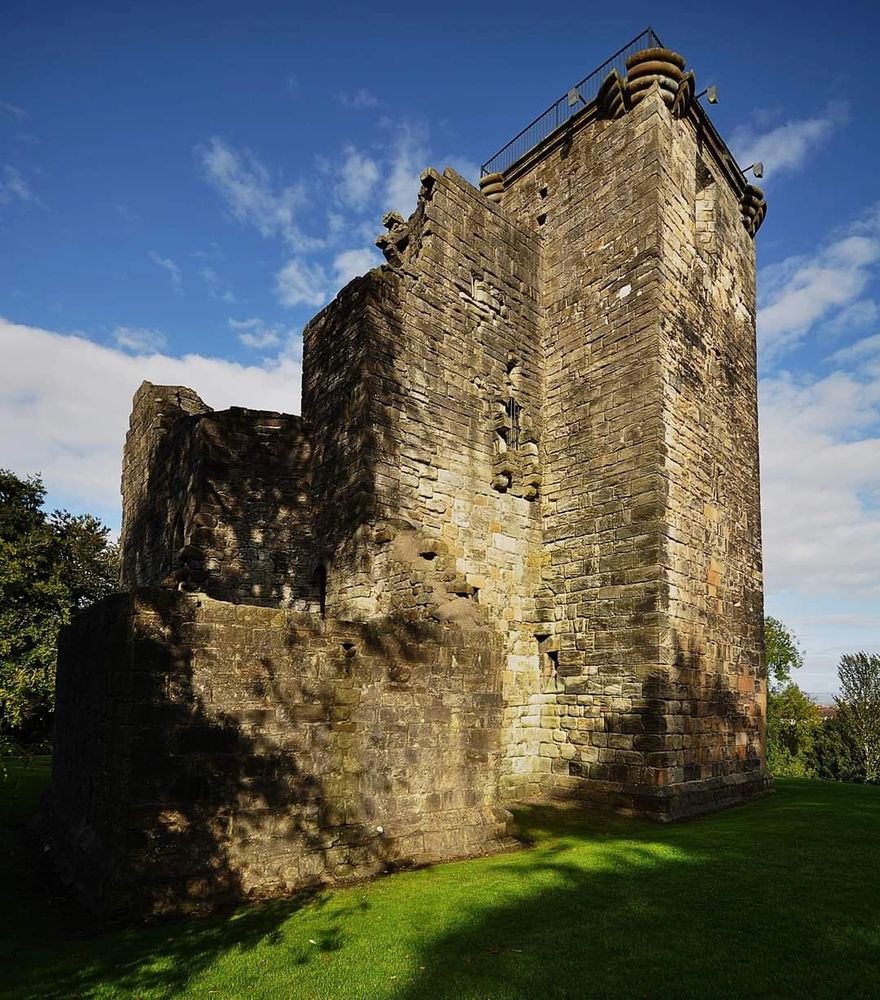
Welcome
Experience the Legacy of Friends of crookston castle
Crookston is the only surviving medieval Castle in the city of Glasgow. The current Castle has stood 600 years, watching over

Crookston is the only surviving medieval Castle in the city of Glasgow. The current Castle has stood 600 years, watching over
Check out this great video

About the Castle – A history of Crookston Castle, its significance, and key moments.
Perched on a hill in the heart of Glasgow, Crookston Castle is a rare survivor of Scotland’s medieval past. Originally built in the 12th century by the de Croc family , the castle later passed into the hands of the powerful Stewart family , shaping its history for generations.
It is said that Mary, Queen of Scots once visited the castle, standing under its ancient walls before her fateful battles. The structure, now a scheduled monument , remains a proud reminder of Glasgow’s medieval roots.
Today, Crookston Castle is a place where history meets community—a landmark waiting to be explored.
Crookston Castle stands as a powerful reminder of Glasgow’s medieval past. The castle and surrounding area take their name from Robert Croc, a vassal of Walter fitz Alan, the first hereditary High Steward of Scotland.
In the 12th century, Robert Croc was granted lands that became known as "Croc’s toun". Over time evolving into Crookston. Historical records also refer to "Crucsfeu", which may have designated a wider lordship, including the castle and its surroundings.
Croc constructed an earth and timber castle surrounded by a substantial bank and ditch, likely incorporating the defences of an earlier ringwork. Croc’s Castle would occupied a strategically significant position, controlling the southern approach to Glasgow from its steep-sided hilltop overlooking the Levern Water and the White Cart.
Around 1400, Croc’s Castle was replaced with the stone-built tower that remains today. Over the centuries, Crookston Castle saw royal conflicts, sieges, and political intrigue, including an attack by King James IV in 1489 and the capture of the castle by Regent Arran in 1544. It remained a residence until the late 16th century before falling into ruin.
The castle gained fame in the 19th century thanks to Sir Walter Scott’s novel The Abbot, which romantically linked the Castle to Mary, Queen of Scots, who had married Crookston’s Lord Henry Stuart (Lord Darnley) in 1565.
Later, the Stirling Maxwell’s consolidated the Castle ruin, conserving the site, and in 1931 it became the first property gifted to the National Trust for Scotland.
Today, Crookston Castle is a cherished historical landmark, and we continue to uncover more about its past, including details of its construction, daily life, and the communities that grew around it.
Castle Architecture (images/drawnings from Ross and Mc) Crookston Castle is unique in Scotland, featuring a high rectangular tower flanked by four square corner towers. The three-storey main block measures approximately 19 metres by 12 metres, with thick rubble-built walls up to 3.7 metres wide, incorporating high-quality ashlar dressings.
The castle’s entrance is on the north side, protected by two doors and a portcullis, leading directly to a rib-vaulted basement with slit windows. A well chamber is hidden beneath a staircase, which ascends to the Great Hall above. This first-floor hall is an impressive space with a pointed vault rising over 8 metres, a large fireplace, and deep window embrasures with stone seats. From here, passages run through the east wall to the north-east tower, which remains the best-preserved section of the castle. This tower contained a guardroom and a trapdoor leading to a vaulted prison below. The second and third floors likely served as private chambers, with a parapet walk and turrets crowning the structure.
Each of the four towers originally rose four storeys, containing kitchens, stores, bedchambers, servants’ quarters, and a prison. Archaeological excavations suggest the north-east and south-west towers were built first, creating a Z-plan layout, followed later by the north-west and south-east towers. A courtyard wall may have enclosed the site, as evidence of significant stone debris was found in surrounding earthworks.
Despite centuries of decay, Crookston Castle remains a fascinating example of medieval military architecture, and its unique layout sets it apart from other Scottish strongholds.
Castle, its significance, and key moments.

Would you like join and be a part of friends of Crookston Castle
Crookston Castle, Brockburn Road, Glasgow, UK
Friends of crookston castle

Donations to friends of Crookston Castle scan Qr code or follow link https://pay.sumup.com/b2c/QKWKHI84?utm_campaign=pdf&utm_medium=print&utm_source=qr